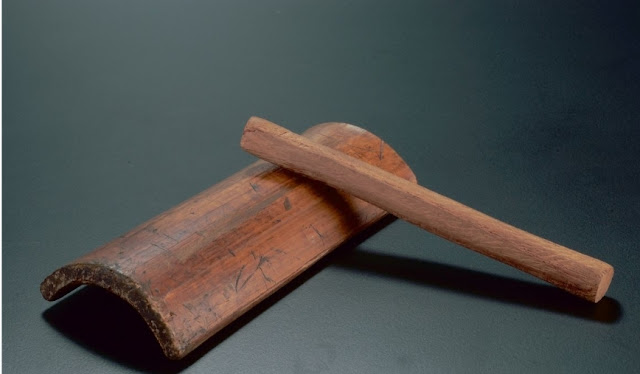The Street Vendors
The early post-war years were lean years, and families had to eke out incomes for their survival. It was quite normal for several members of a family to be working, including children! Jobs were scarce and opportunities rare. Many turned to street hawking, selling household goods such as cleaning brushes, feather dusters, broom, pails, and rattan baskets.
Items such as long bamboo poles for drying laundry would be cumbersome if they had to be carried home from shops. It was definitely more convenient and practical for housewives to purchase such items from these street vendors.
These hawkers were mindful that the items they were selling would not need quick replenishments and they would space out their visits to ensure that their ensuing visits would be timed to serve the needs of their customers. They would plan their destinations and routes for each day accordingly.
The usual mode of transport for these hawkers was the tricycle with a cart mounted on it. It was a wonder that each cart was able to haul literally hundreds of items and that the hawker would know the exact location of each item and its price. Quite frequently, the hawker would have with him another person, probably his son, to push the heavy cart along the streets as it went from place to place.
There were also those who carried wares in two containers hung one on each side of a pole and carried across their shoulders. These would be the hawkers who trudged from place to place on foot. Understandably they would not be hawking goods that were bulky and heavy as these had to be manually carried. It was a tough life for them and they had to be strong and fit for the day's work. The range of goods offered by these vendors differed widely from hawker to hawker and was largely the result of the ingenuity of each individual hawker. Products could range from food items such as satay, braised meats, noodle dishes, cakes and snacks to toys.
At around 8pm on Mondays one ( and sometimes two) teenaged boys would walk around the streets in our neighbourhood, each knocking out his signature rhythms on what can best described as bamboo percussion. The 'instruments' were well-seasoned bamboo halves about 15 cm in length aand struck with wooden sticks.
The boys were ingenious in the use of their instruments as they were able to produce two different pitches by clamping and releasing the bamboo pieces with their fingers, and using these two pitches to create interesting rhythms. They were also good showmen who often attracted attention to their pyrotechnics in beating out their rhythmic patterns. They would toss the bamboo pieces high up in the air and catch them in tempo of their rhythms. They were indeed a sight to behold! Instead of shouting out their wares as some hawkers did, they had this novel way of announcing what they were hawking.
They were part of the fishball noodle ensemble and not only would they take orders and deliver steaming hot bowls of noodles, they would also return to collect the bowls. I had often marvelled at their catchy rhythms and showmandship! I suspect that they were not paid a daily or monthly wage, and had to depend on commissions from the orders they received, and that was the prime motivation of their innovativeness and enthusiasm.







Comments
Post a Comment